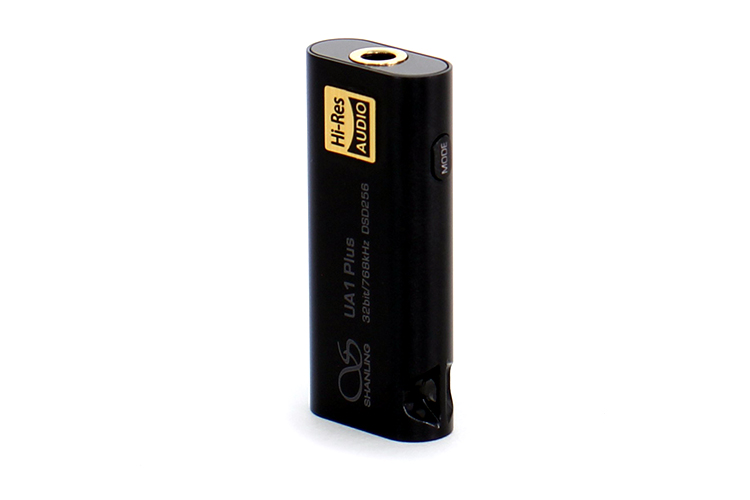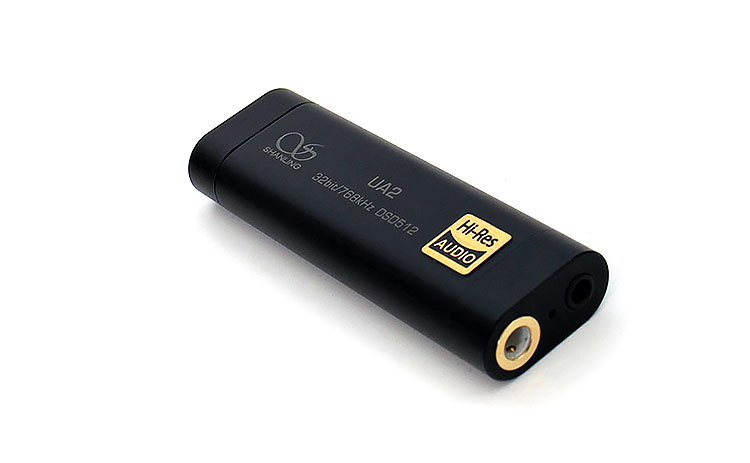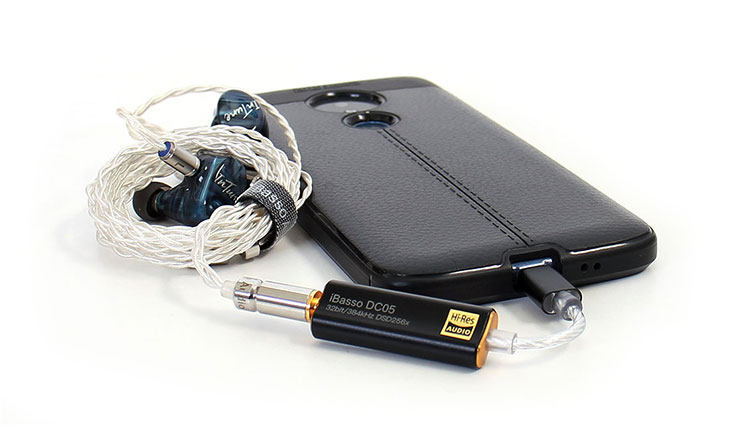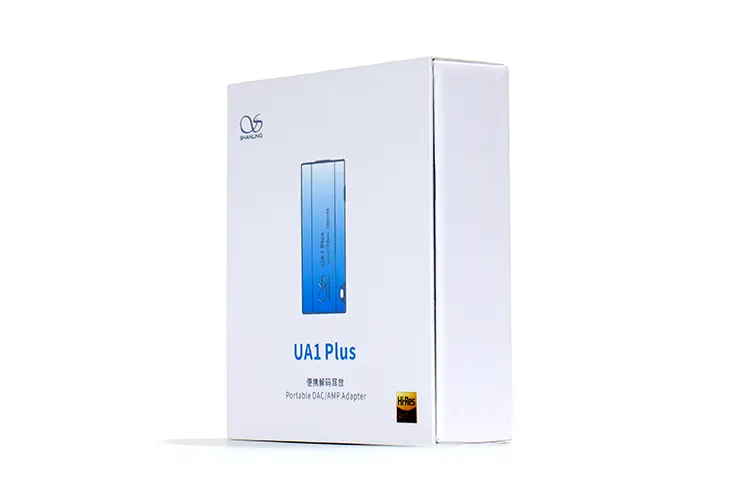Synergy
Power
Somehow I feel like Shanling tuned the UA1 Plus modestly as far as pushing the SOCs hard or to their limits. I can name a few dongles with the same configuration that outperform the UA1 Plus.
What I’m referring to is the output power in particular. Some dongles equipped with dual CS43131 chips are reporting higher power output numbers. But although the UA1 Plus is not a power output beast, it manages to power IEMs very well.
It seems the overall component configuration is limited to restrict power consumption and designed to overlook what the chips can do at max levels. I would consider the overall tuning as safe.
We can, however, use the analogy of the car that can go 250 kilometers per hour but the bottom line is you can’t go over the speed limit, so what’s the point of having so much power under the hood?
The UA1 Plus will get you there the same, not at blazing speeds, but with the added benefit of going easy on gas consumption.
Pairing
Since the Shanling UA1 Plus has a neutral sound signature I would just pair it with an IEM that has a suitable sound curve and one that you like. Notice I said IEMs, again. With 1.6V or 80 mW per side on tap, the UA1 Plus might not be a good candidate for full-sized headphones because it might not reach loud enough volume levels.
I had that experience with the Sundara open back for example. The top end of the volume was pretty loud but power seemed to run out at the top level.
I had great pairing success with FiiO’s FD5, FD7 plus a couple of IEMs that use a hybrid driver configuration like the TRI I3. This one is a bit hard to push just like the Svanar which is a 60Ω single driver IEM but needs decent amplification to perform optimally.
Select Comparisons
Shanling UA2
Technical
We already established at the header that the Shanling UA1 Plus supersedes and surpasses the UA1 and the UA1s in performance and features. I’m betting that those two models will eventually be phased out once they’re all sold out.
But can the UA1 Plus compete with its bigger brother, the UA2? It seems that these two have little similarities. For example, the SOC configuration that the UA2 uses is also a two-chip solution, but it employs a single ESS ES9038Q2M DAC followed by a single Ricore RE6863 headphone amplifier chip.
Another difference lies in that the UA1 Plus counts on an onboard multifunction button that adjusts volume and gives the user a pause-and-play onboard button, but the UA2 has no such features. The UA2 does have volume adjustment capability but it can only be achieved via the Eddict player app.
The biggest feature that the UA2 has over the UA1 Plus is the additional balanced connection. The tap however uses a 2.5mm connector that is becoming less popular nowadays and giving way to the now more popular 4.4mm Pentaconn.
Design
The UA2 is a longer dongle but girth and thickness remain similar on both models. But, in this case, size doesn’t matter. Please stay on topic. The UA2 length is listed at 54mm which is a recorded gain of 14mm in length compared to the UA1 Plus.
The UA2 is missing the Lanyard slot but other than that, both dongles seem to be made at the same factory. Both shells are made from Anodized Aluminum and both use rounded rectangle end caps.
You can choose one of two color schemes if you go with the UA1 Plus, Titanium gray or black. The UA2 comes in only one color scheme, black.
Performance
The numbers speak for themselves. If you compare the single-ended output of the UA2 it’s listed at 125 mW at 32Ω. The UA1 plus manages to produce 80 mW at the same load. If you look at the balanced output specification of the UA2 it increases that number to 195mW, which is a considerable step up.
The con is that many IEM users are not 2.5mm balanced ready and the connector is being used less and less. The other specifications must be considered as the more useful in practice.
If you compare channel separation at the same output source, the 3.5mm, then there’s nothing to see here because they both measure 76db @ 32Ω. The dynamic range and SNR ratings however gain a few points favoring the UA1 Plus.
Noise levels were not listed but to my ears, the UA1 Plus has a darker background and it also lists a low output impedance rating. Distortion level specs are also lower on the UA1 Plus.
The bottom line is that the UA1 Plus can compete with the UA2 in certain aspects except for raw output power. In this case, the UA2 would be the most capable of pairing well with some larger but efficient headphones.
FiiO KA2
Technical
The FiiO KA2 sits in a similar price tier and has almost identical internal hardware. The KA2 also uses a dual Cirrus Logic CS43131 chipset that feeds a single 4.4mm Pentaconn balanced output connection in this case.
Is it fair to compare a 4.4mm connection to a 3.5mm single-ended one? The fact that both dongles tap into the identical SOCs onboard power makes it so.
These two dongles have a few similarities it seems. Even their apps share the same basic features, minus the player portion. Bit rates, DSD, and PCM digital formats are also handled identically.
Design
It seems that at this price tier, most dongle DACs have attached input cables and the KA2 follows suit. The funny thing is that the attached cable looks similar to the removable cable Shanling throws in the box with the UA1 Plus.
As far as aesthetics, you can tell it’s a FiiO dongle because it has FiiO’s signature design that gives its dongles an appropriate mobile audio component appearance. The color scheme is also a familiar black and gold trim.
My only gripe is that at this stage of the game, some dongle DACs still come with an attached cable. I could only imagine that an intermittent cable or a break within one of the wires would render the device useless and it looks as if these devices are hard to service.
I’ve never had a problem as such. The FiiO KA2 has been solid in that aspect up to now. The USB-C connector is also solid, but then again, I’ve never had a connectivity issue with any of FiiO’s gear up to date either.
Performance
Sonically there’s not much of a difference to matter here. They both use an identical set of SOCs and both serve up a full-frequency response representation and a flat curve.
The FiiO KA2 does have more power on tap but it’s minimally noticeable. We’re talking about the difference between the FiiO KA2’s 153mW versus 80mW. Perhaps one could say that the UA1 Plus has a slightly lower noise floor.
It all comes down to shape and features. Some prefer the ruggedness of the 4.4mm plug and might consider it a benefit. But the 3.5mm still reigns supreme, as far as availability and user base.
iBasso DC05
Technical
The iBasso DC05 takes a different approach in many ways from the other dongle DACs in this lineup. Yes, it’s also a dual SOC dongle but iBasso opted for a twin ES9219C setup that feeds a single 3.5mm output connection capable of 140mW per side at 16Ω.
If you need MQA capability, the DC05 is the only dongle within this lineup that is capable of handling MQA. There’s further capability, DSD256, and PCM at up to 384kHz as well. It seems to be the most capable as far as handling digital formats.
Design
The iBasso DC05 has a classic gold-on-black color scheme, similar to the FiiO KA2 but so does the UA1 plus. It just has fewer gold accents and a darker appearance overall.
What’s funny is that they’re both almost identical to each other size-wise and you probably couldn’t tell which is which if you held them in your hand, minus the cable.
Performance
For some reason, I find the UA1 Plus produces more bass presence, however, the DC05 has a slight edge producing tones that are closer to true tone. Perhaps it’s because of the cleaner tuning in the bottom ranges of the frequency response curve.
This higher bass presence translates into a warmer sonic experience plus it also produces a smoother character overall. You could say that the UA1 Plus produces a cooler presentation.
Dynamically they perform the same as far as output power although they’re different on paper, they serve up the same amount of power sonically.
The iBasso lists a power output rating of 140mW but at 16Ω while it only posts 93mW at 32Ω. If you look at both models’ specifications, one model is capable of 1.7 volts at 32Ω and the other 1.73 at the same impedance which even theoretically is unperceivable.
Our Verdict
The Shanling UA1 Plus is a dongle DAC that delivers good power to IEMs and is aimed at buyers who are concerned about the overall battery life expectancy of their mobile devices throughout their day but don’t want compromised sound quality.
It’s a dongle that is easy on battery life but it reflects in its total power output which is a small price to pay for efficiency. It still manages to perform well sonically while remaining silent and not producing any hiss or noise of its own.
The UA1 Plus is also surprisingly generous with the inclusion of features in this price tier. The multifunction button, the lanyard along an ample featured app all add up and throw the UA1 Plus into a high value per dollar safe buy category.
Shanling UA1 Plus Technical Specifications
- Dimensions: 40 x 17.7 x 8.2 mm
- Weight: 9.5g
- Output power: 1.6V @ 32Ω (80mW)
- Frequency range: 20 – 40 kHz (+0.5db)
- THD-N: 0,0004% @ 32Ω (A-weighted)
- Dynamic range: 125db @32Ω (A-weighted)
- Signal-to-noise ratio: 126db @32Ω (A-weighted)
- Channel separation: 71db @32Ω
- Output impedance: 0,5Ω






